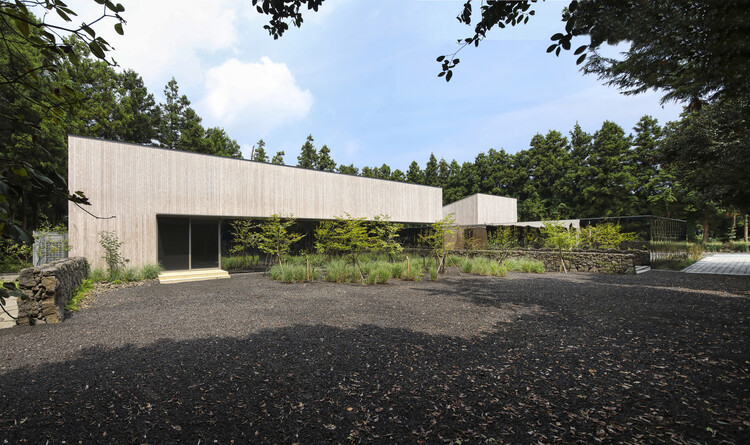
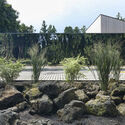
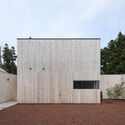
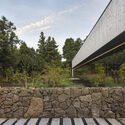
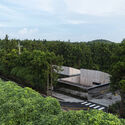

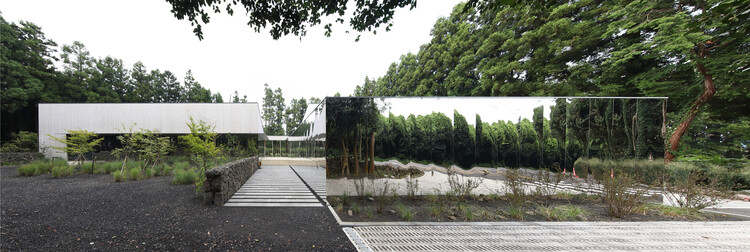
**Studio Jera (A Photography Studio that Remembers the Forest)** – Jeju, known for its frequent winds, is home to an abundance of cedar trees. The reason for this is painful. During the Japanese occupation, indiscriminate logging occurred and Japanese cedars were planted as compensation, continuing to thrive today. However, thanks to the cedars, the mountains and arid fields of Jeju were filled, and the trees provided protection from the wind for the ripe, golden tangerines.

“Kyungheung Farm”, located in Shinheung-ri and Sumang-ri in Namwon-eup, Seogwipo, is a historic farm that pioneered tangerine cultivation in Namwon. Cedars were planted around the tangerine fields and along the paths when the farm was established. More than 50 years later, the cedar forest has become a central and irreplaceable figure of Kyungheung Farm. The land where Studio Jera is being built was once a Kiwi farm surrounded by cedar trees as a natural fence.
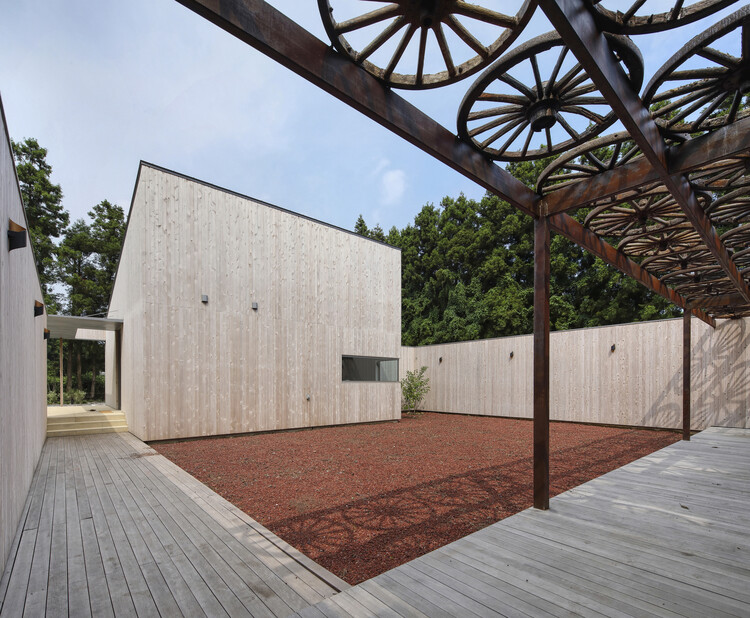
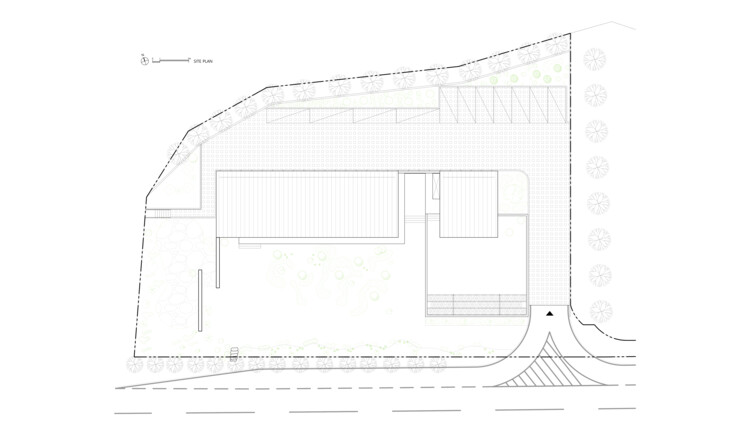
In the 1970s and 80s, the farm was the residents’ main source of income. The farm was operated by local labor and profits were reinvested in the farm, planting camellias and cultivating the forest. For the client, who inherited his late father’s farm, the cedars and camellias are as precious as his father’s. Preserving, protecting and cultivating them is the way he remembers and honors his father, making the forest the true protagonist of this place.

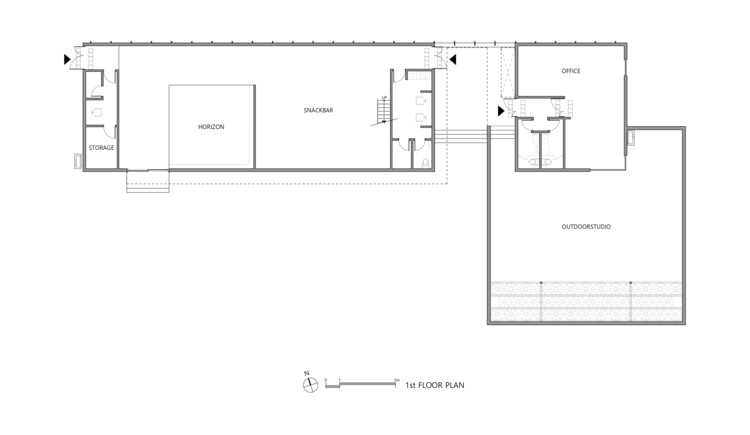

What could be a better way to preserve, appreciate and remember the beauty of the Kyungheung Farm forest than through photography? The client wisely planned a photography studio, utilizing the farm’s camellia forest, which has already become a popular destination for outdoor photography for newlyweds. The programs to be built on this land of approximately 700 pyeong (approximately 2,310 square meters) are as follows:
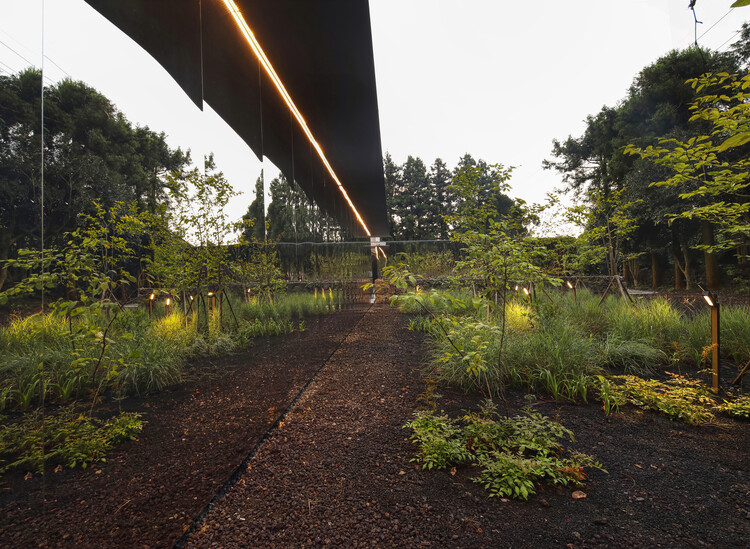
An indoor studio equipped with a skyline as a backdrop, as well as separate washrooms for men and women and fitting rooms in the main building. A separate building will house the office and a reception area. Outside, adjacent to the separate building, there will be a 14m x 14m square courtyard, prepared for small weddings, photo shoots or events. The back of the building will serve as parking for visitors, while the front garden will function as a natural photography studio.
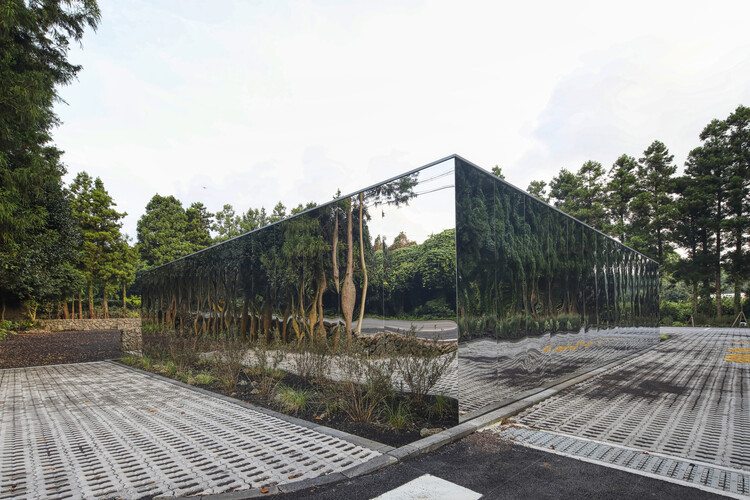
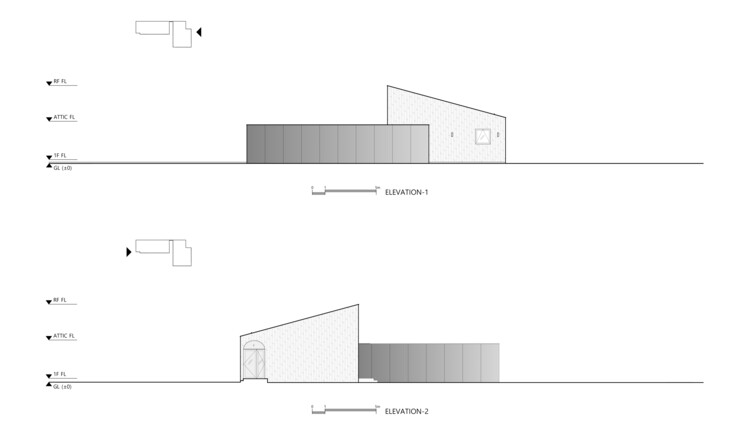
The ground floor studio, just under 300㎡, was designed to subtly exist rather than stand out. The idea was for the studio to be a place to take photos and not an object to be photographed in itself. The design lacked the confidence needed to make the building a worthy setting to celebrate a new beginning, so it was kept in its simplest form, discreetly nestled in the forest. Even the simple pasta was hidden with a stainless steel mirror up to eye level so as not to attract attention. As a result, the mirrored surface reflects the forest, creating a sense of infinite depth, allowing visitors to experience a unique moment of seeing themselves and their reflection in the forest.
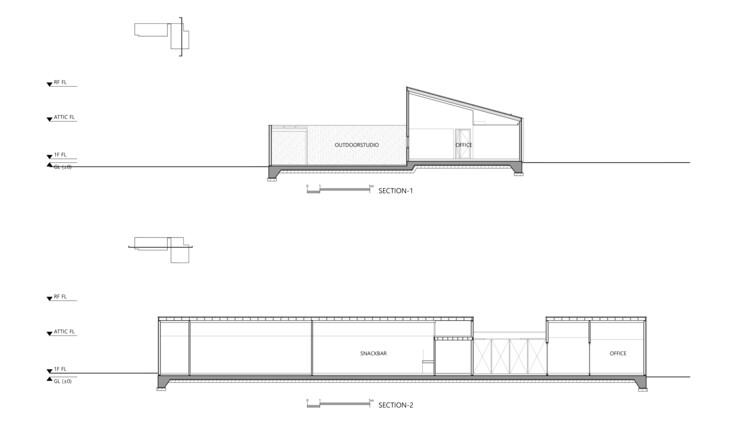

The 14m x 14m patio is perfectly hidden from the outside thanks to the stainless steel mirror. This hidden space is an abstract forest within the real forest, with the contrast between the blue sky and red volcanic tuff creating a surprisingly empty space. The inner walls of the courtyard are finished in red cedar, symbolizing the vertical cedar forest and representing a connection between the sky and the ground. Above the deck, which can serve as a platform for events or small weddings, a wagon wheel is installed as a canopy. On sunny days, shadows from the wagon wheel roll across the floor and up the walls.

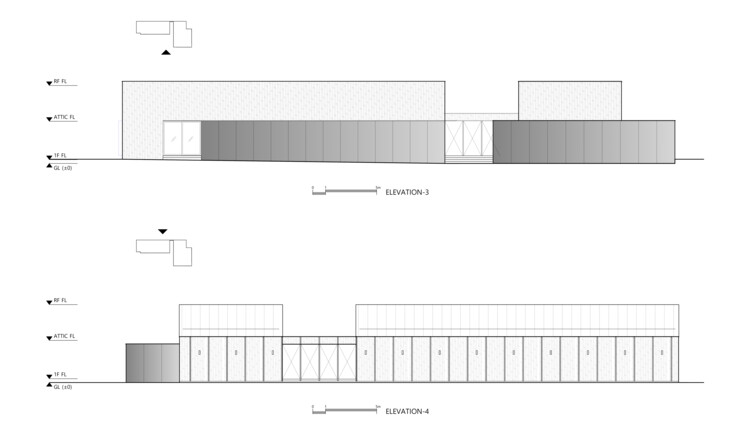
In the studio, where the forest is the true master, the newly planned landscaping harmonizes with the original inhabitants, such as cedars and camellias, while at the same time being designed to respond to the four seasons. The main garden in front of the studio features a Japanese tree, known as the summer camellia, as a focal point. Magnolia and viburnum are planted to herald the start of spring, while perennials like panicum and daylilies are prepared to endure the summer. The basalt stone wall, similar to the boundaries of the field surrounding the site, is used to define the interior courtyard space and create a sense of place. The stone wall is reflected in the stainless steel mirror, creating a visual texture on the metal surface and an expanded sense of space.
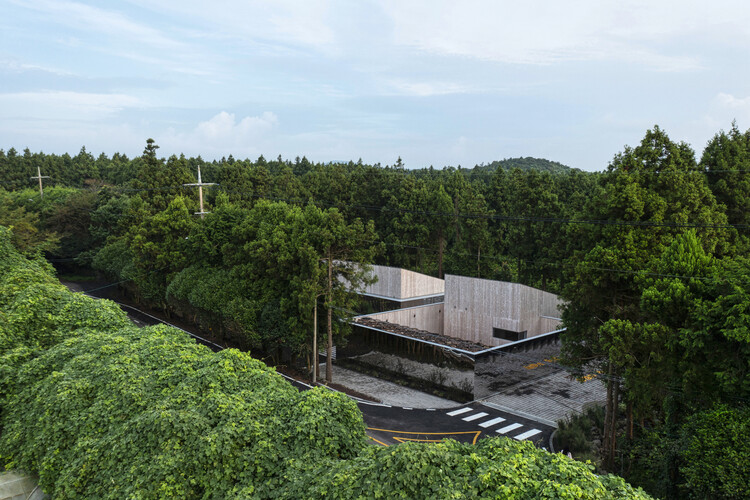
#Jeju #Island #Wedding #Studio #Todot #Architects #Partners